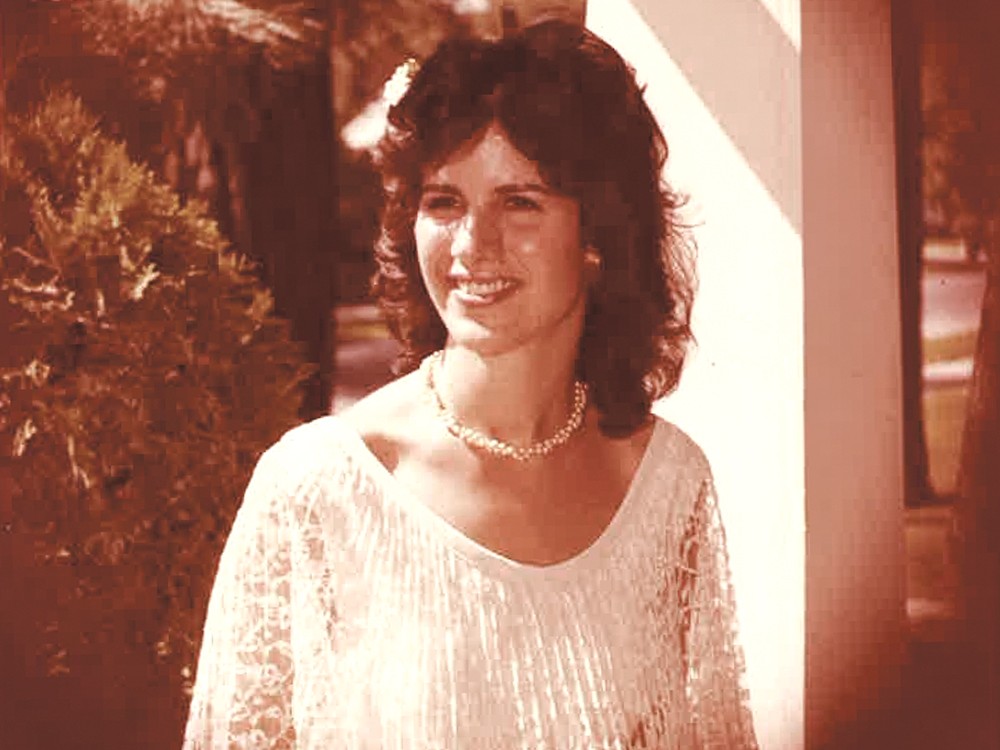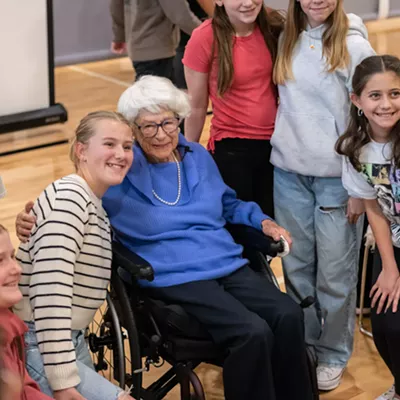It was 1974, and Spokane was flying high. For the past seven months, the city had courted people from around the world at Expo ’74, proud of its newly restored downtown. Where blight and industrial railroad tracks had defined the city center, now a sprawling park with green lawns signaled the city’s newfound optimism. The National Civic League named it an “All-America City,” and in some ways, Spokane really was a place where the promise of the American Dream felt alive and well. It was a city that felt like a town: a place where families could feel safe, but where the luxuries of urban life were just a 10-minute drive away. A place where people left their doors unlocked at night and let their kids stay out playing after dark. A place that had a symphony and an opera house, but still held onto the rugged, individualistic spirit that defined the Wild West.
So it was shocking when Laurie Partridge, a 17-year-old Ferris High School student, vanished on Dec. 4, 1974, in one of Spokane’s safest areas. According to an article in the Spokesman-Review, Partridge, complaining of stomach cramps, called to see if someone could pick her up from school. When they couldn’t, the 5-foot-4 girl left to walk the 2 miles home by herself. She never arrived, and later that night she failed to show up for her shift at the Lincoln Heights Theater. Her family knocked on doors along her route, and police staked out a Beach Boys show she had tickets to attend at the Spokane Coliseum the next week. Suspects were interviewed — even Ted Bundy, the notorious serial killer who lived in Washington state at one time, was asked about Partridge. But she was never found.
Today, Spokane Police Detective Jeff Barrington is trying to pick up the pieces of a similar case: Kathryn Gregory, or Kathy, a 24-year-old woman who vanished in November 1981. But it’s a case that hasn’t received nearly the attention the Partridge case has.
At 24, Gregory was married and lived in a tiny brick house on Tekoa Street, just south of Manito Park. She lived a conservative, average life, according to Barrington, always showing up for her shift as a nurse at Spokane’s Deaconess Medical Center at least a half hour early, always parking her chocolate brown 1978 Toyota Corolla in the same parking lot across from the hospital.
So when she didn’t show up for her 1 pm shift on the afternoon of Nov. 4, her co-workers started worrying. Her car wasn’t in the lot, and she hadn’t called to say she was sick. They phoned her husband Brian — a DJ on Spokane’s then-popular Rock 106 radio station — and asked if he’d seen her. He said they’d gone shopping that morning downtown, stopping to buy cat food at a Safeway store at Third and Maple. He’d dropped her off at 11 am at their South Hill home so she could get ready for work. He left to meet his colleagues downtown for a business meeting.
On Nov. 6, two days after her disappearance, her car was located, parked on the street at Fifth and Monroe — just one block from the front doors of Deaconess, but in a place her co-workers said Gregory would never park. Though Fred “Kevin” Coe, the notorious South Hill rapist, had been put behind bars that July, his presence had left women in Spokane acutely aware of their safety. Gregory’s shift on Nov. 4 was slated to last 10 hours, ending long after dark. And she wasn’t the type to risk walking in a strange area at night.
When Barrington was handed the Gregory case, he was shocked at how disorganized it seemed. Reports and case files were crammed into a box with no sense of order. As he flips through the case 32 years later, he shakes his head at some of the ways it was handled.
Today, he says, Gregory’s car would have been seized by police and combed for evidence. Though officers took snapshots of her vehicle inside and out, it was immediately turned back over to Gregory’s husband.
Barrington says when he got ahold of the Gregory case, he looked for bloodstains in the basement of the house on Tekoa where the couple lived. Another investigator walked the couple’s five-acre property at Lake Coeur d’Alene, looking for any clues. Barrington tried to find the brown hatchback, but after all this time, figures the car probably has been destroyed.
Barrington certainly has theories about what happened on that late fall day back in 1981, and he’s got a piece of notebook paper with a giant checklist of things pertaining to the case that he’d like to check out. There are so many questions he wonders if investigators looked into so long ago. Such as:
Why was the seat pushed back so far in Gregory’s car? Who might have driven it?
It’s cases like this that made Barrington want to be a detective. But he says when he has a stack of recent murder files piling up, a 32-year-old case that might be full of stale leads and dead suspects is pushed to the back burner.
“When you get a case on your desk, I don’t want it on my desk very long,” he says. “Unfortunately for me, I think this one’s on my desk for a while.”
Tips on the Kathryn Gregory case should be directed to Crime Check, (509) 456-2233.

















